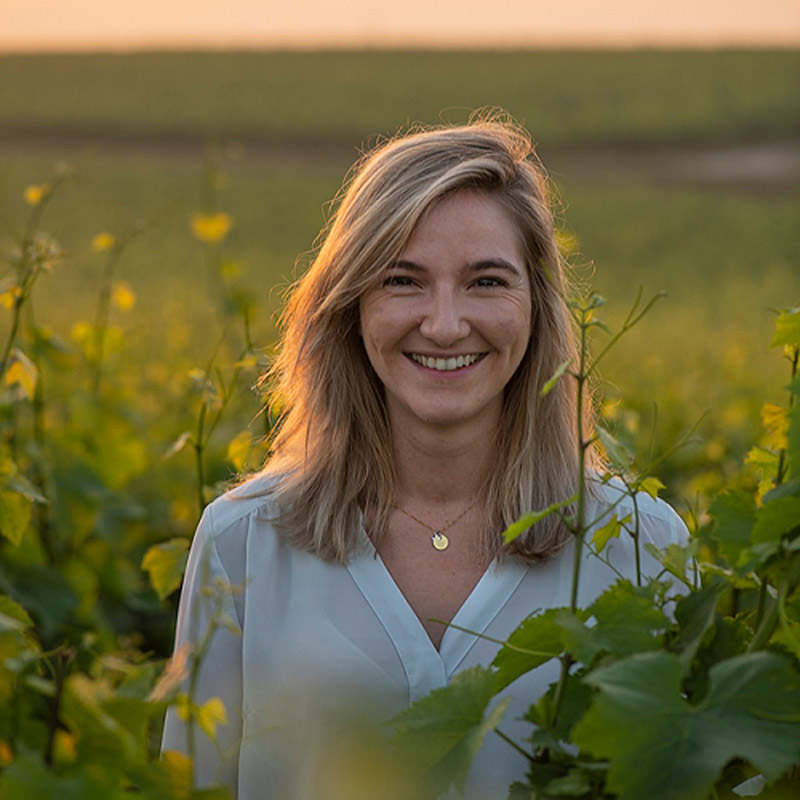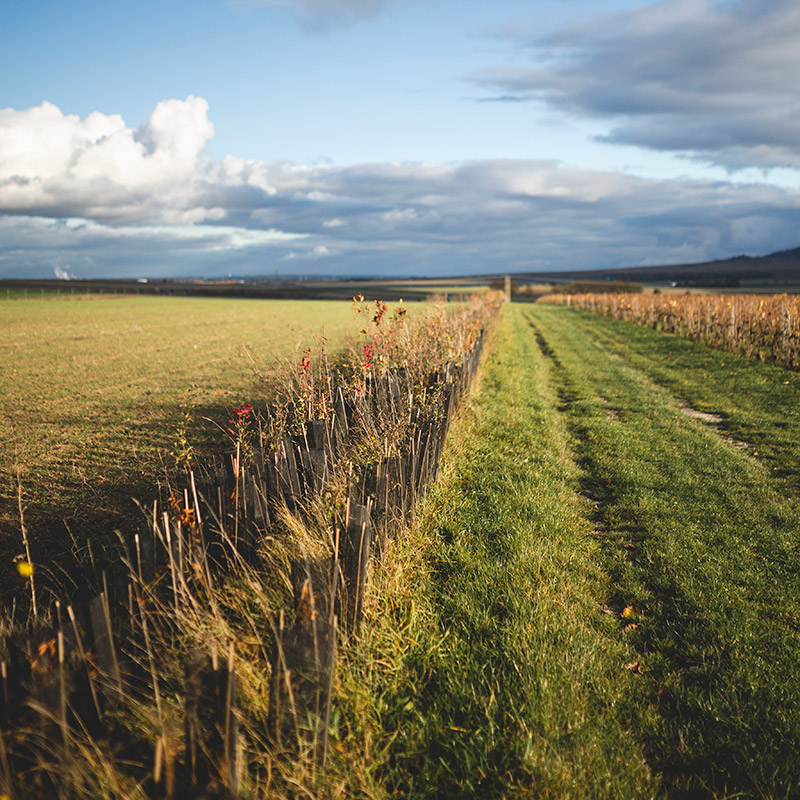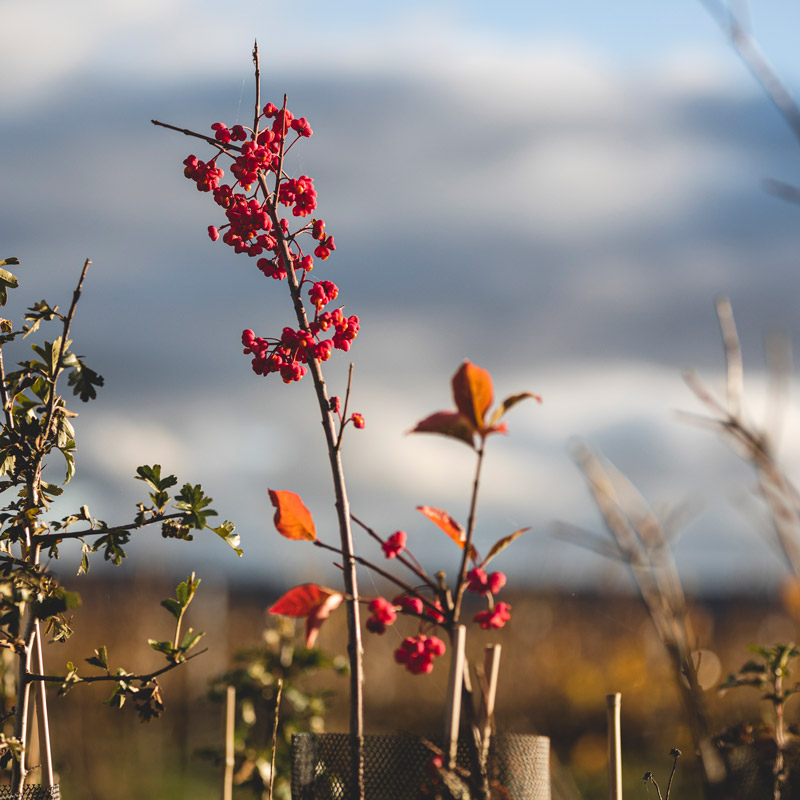For a long time, the 50th parallel was considered the northern limit for quality viticulture, Champagne the northernmost wine region in Europe. Those days are over, wine is now produced in Schleswig-Holstein and on Sylt, in England and Denmark, even in Sweden. Champagne has been able to benefit from the effects of climate change longer than anywhere else. The grapes now reach the right ripeness almost effortlessly every year. Between 2003 and 2019 alone, there were five harvests in Champagne that began as early as August, instead of the usual end of September. "We used to be able to make a Dom Ruinart maybe five times in ten years, now it works about eight times," reports Louise Bryden, winemaker and project manager at Ruinart.
.jpg) |
In the region, Ruinart is considered one of the pioneers in environmental and climate protection. The vineyards owned by the house have been certified with the sustainability seal "Viticulture durable en Champagne" since 2014. In the long term, those responsible want to motivate all grape suppliers to join the seal by offering financial incentives. The company has also taken a number of other smaller and larger steps to save CO2 and conserve resources. One of the most innovative developments is the new "Second Skin" outer packaging. Made of 99 per cent paper, it saves about 60 per cent of the greenhouse gas emissions of conventional packaging.
In the coming years, the focus at Ruinart will be on a pilot project for biodiversity in the historic vineyards in Taissy. On around 40 hectares - 20 hectares each of Chardonnay and Pinot Meunier - the diversity of the local fauna and flora is to be promoted. "Vitiforestry" is the name of the approach, which aims to bring more life to the vineyards and their soils in a natural way using forestry methods.
"As a first step, we planted many hedge strips and trees around and between the vineyards," explains the project manager. The young winemaker is on fire for this "green heart" of the Vitiforestry project. Since 2021, around 14,000 native trees and shrubs such as hornbeam and lime, dogwood and hawthorn have been planted, and the aim is to have 20,000 by 2023.
"In this way, we want to break up the huge monoculture areas of vineyards in Champagne and create an ecosystem where native plants and animals find a habitat," explains Louise Bryden.
 Louise Bryden leads the Vitiforestry project
Louise Bryden leads the Vitiforestry project ©Mathieu-Bonnevie
©Mathieu-BonnevieThe vineyards of the Premier Cru site in Taissy lend themselves to the project for several reasons: The forest of Fort de Montbré borders directly on the contiguous, huge vineyard area. "The trees here are much too dense, and they are almost exclusively pines," explains the winemaker. So change is also needed in the forest. Therefore, regeneration steps are being taken there in parallel to promote the trees' vigour and diversity in the forest. Ruinart is supported by Reforest'Action, a forestry specialist certified as a sustainable "B Corp", which takes care of the preservation, regeneration and new planting of the forest areas. At the foot of the vineyards, there is also a wild meadow that is considered a rarity in Champagne - and is therefore to be preserved at all costs on the recommendation of the consultants. "I didn't realise how many different insects, animals and plants live in such a meadow," says Louise Bryden. The hedges and trees between the meadow and the vineyards now form additional corridors for birds, bats and other animals. "We expect this to create a natural fragmentation of the vineyards, as it might have been in the past," she describes the perspective. For the vineyards, she expects a positive effect in the long term: "When the planted trees have grown large, they also create a special microclimate. We hope, for example, that they will break the wind and the cold and thus mitigate the effects of late frosts."
In parallel to planting woody plants, the project manager is also experimenting with different forms of greening to improve soil life and fertility. Weather stations are to provide detailed data so that more plant protection products can be saved in the long term. "We have reduced the use of pesticides by 50 per cent since 2008. The weather stations help us to use crop protection as little and as precisely as possible." All these aspects are aimed at counteracting the effects of climate change. To do so, they should help establish resilient vineyards, healthy and fertile soils and a diverse ecosystem.
.jpg) |
 ©Mathieu-Bonnevie
©Mathieu-BonnevieWorking in Taissy's vineyards attracts the attention of surrounding winegrowers - and that's exactly what we want them to do. "We want to invite as many neighbours as possible to join in," says Louise Bryden. Vintners from the surrounding vineyards have already joined in and planted trees as well. "A project like this - and with a size of 40 hectares - has not yet been seen in Champagne. We have realised that we have to do something, there is no alternative. But in Champagne it is difficult to change anything. I hope it's not too late," the winemaker emphasises. One of the biggest challenges is to measure and document the effects of the project scientifically. To this end, for example, the number of insects and animals present was recorded at the beginning. The installed weather stations will also record changes in the microclimate. Many additional results and data are being precisely documented so that they can be made available to interested producers from the Champagne region.
The project is receiving further attention from the German artist Nils-Udo. In preparation for the 300th anniversary of the Champagne House in 2029, Ruinart commissioned the "Land Art" pioneer to install a work of art in the middle of the vineyards. Under the title "Habitat", the artist created three sculptures, visible from afar, from tree trunks and the vines cleared as part of the Vitiforestry project. "We asked him to drill small holes in the tree trunks for the insects," says Louise Bryden, pleased with the integration of the artwork into the project. In addition to the bird and insect houses, the insects now also find a home here. But does the Vitiforestry project also produce more quality for Ruinart's wines? Louise Bryden pulls her shoulders up: "I don't know at this point. I hope it will."